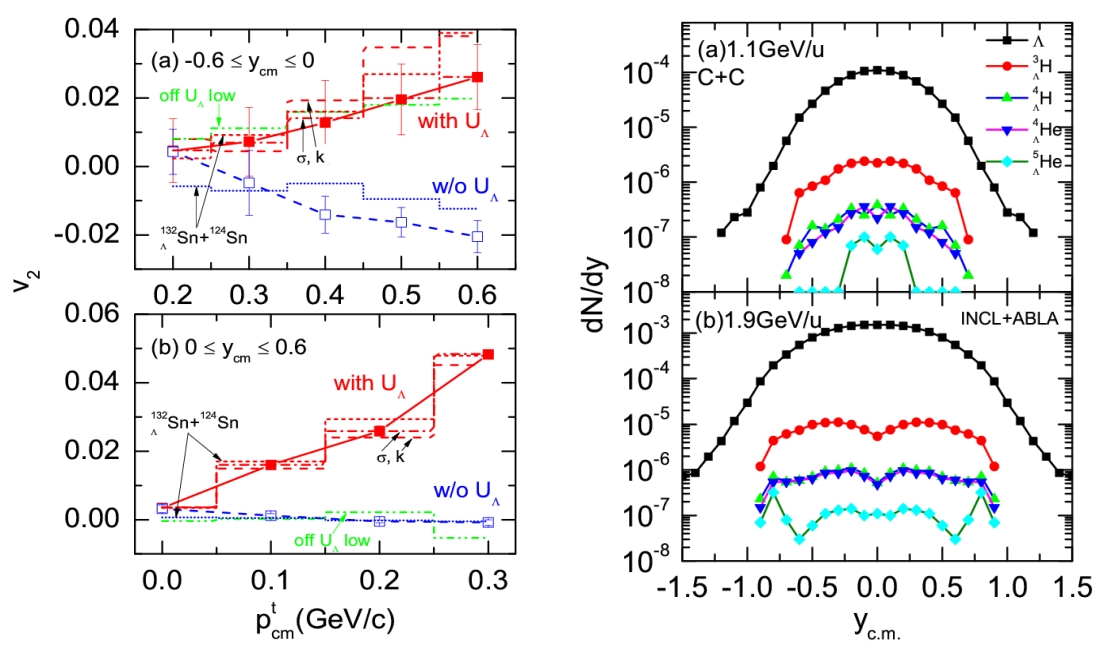Researchers Propose New Method to Probe Hyperon Potential
A research team led by Prof. YONG Gaochan from the Institute of Modern Physics (IMP), Chinese Academy of Sciences (CAS), has proposed a novel experimental method to probe the hyperon potential, offering new insights into resolving the longstanding "hyperon puzzle" in neutron stars. These findings were published in Physics Letters B and Physical Review C.
Conventional theories suggest that the extreme densities within neutron stars lead to the production of hyperons containing strange quarks (e.g., Λ particles). These hyperons significantly soften the equation of state (EoS) and reduce the maximum mass of neutron stars. However, astronomical observations have discovered neutron stars with masses approaching or even exceeding twice that of the sun, which contradicts theoretical predictions.
Hyperon potential refers to the interaction potential between a hyperon and a nucleon. Aiming to resolve the "neutron star hyperon puzzle", the study of hyperon potential has emerged as a frontier topic in the interdisciplinary field of nuclear and astrophysics. Currently, it is believed that if hyperon potentials exhibit stronger repulsion at high densities, they could counteract the softening effect of the EoS, thereby allowing massive neutron stars to exist.
"An effective means to constrain high-density hyperon potentials relies on heavy-ion collision experiments. However, in conventional collisions, hyperons are mostly secondary particles produced after the collision, and their behavior is influenced by multiple factors, making their signals easily overwhelmed by background noise," said Prof. YONG Gaochan from IMP.
To address this challenge, the researchers proposed a new experiment design. The method employs atomic nuclei containing Λ hyperons as projectiles to bombard ordinary nuclei at a laboratory energy of 400 MeV, which is below the Λ hyperon production threshold. This ensures that all observed Λ hyperons originate from the primordial components of the projectile hypernuclei rather than being generated during collisions.
By analyzing the elliptic flow of Λ hyperons, the researchers discovered that in the negative rapidity region, the elliptic flow strength is highly sensitive to the high-density hyperon potential. In contrast, the positive rapidity region reflects the strength of the low-density hyperon potential. This enables direct extraction of hyperon potential parameters across different density regimes from experimental data.
Additionally, the researchers investigated the production mechanisms of light hypertritons. Simulations of carbon-carbon collisions revealed that hyperon production is primarily influenced by the nuclear EoS, while the formation of light hypernuclei exhibits stronger sensitivity to the hyperon potential at high and low densities, depending on the incident beam energies of 1.1 GeV and 1.9 GeV.
These results provide a framework for future experiments to resolve the hyperon puzzle. "We hope that relevant experimental research will be carried out at large-scale scientifific facilities, thus advancing our understanding of strong interactions between strange and non-strange particles," said YONG.

Figure. Left: Hyperon elliptic flow versus transverse momentum in hypernucleus-nucleus collisions. Right: Rapidity distributions of light hypertriton production in carbon-carbon collisions. (Image from IMP)
DOI:
https://doi.org/10.1016/j.physletb.2025.139549
https://doi.org/10.1103/PhysRevC.111.054617
Contact Information
Institute of Modern Physics
Email: LIU Fang


 甘公网安备 62010202000713号
甘公网安备 62010202000713号


